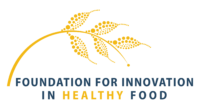COALITION FOR
GRAIN FIBER
GRAIN FIBER
We seek to reduce chronic disease and improve lives at a global scale:
Read a summary of our vision and approach. Enter your email address to receive the Coalition for Grain Fiber PDF.

The Most Important
Crop in History
- Wheat is the source of 37% of Americans’ fiber intake, which is essential for a healthy diet.
- Wheat delivers 20% of protein and calories globally.
- The average American consumes more than 4.5 servings of wheat daily.
- Wheat consumption is consistent across income classes.
Wheat is the primary staple of many nations’ diet, including two thirds of grains consumed in the United States. Humans have harvested wheat for over ten thousand years. It is arguably the most important food in human history.
Better Health Through Grain
The US Dietary Guidelines Committee designated dietary fiber an “under-consumed nutrient of concern.” Building on recent scientific advances, our effort can permit agri-food technology and infrastructure to increase fibers and other nutrients in desired foods, with government, healthcare, and other organizations who value public health incentivizing this increased fiber incorporation. This approach may save many thousand lives around the world and billions in annual healthcare costs. This approach may address the chronic disease crisis at scale, with potentially exceedingly attractive benefit-to-cost. All socioeconomic groups may benefit, with no required change in consumer behavior. Moreover, by reducing healthcare interventions, currently associated with 10% of carbon emissions in the United States, the broad adoption of high-fiber wheat may also help mitigate climate change.


Our Approach
We target broad technology adoption without relying on consumers to alter their food choices. Collaboration across the supply chain and with organizations that value public health allows us to increase the fiber in grains, with all stakeholders benefiting from the result. And from this collaborative foundation, we inspire further innovation in health and sustainability.
